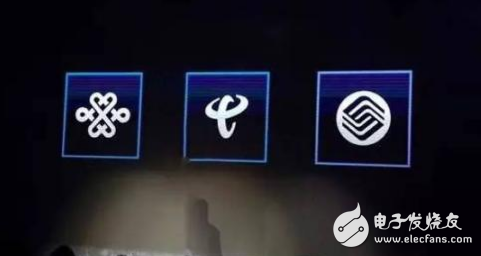4G has been popularized, will 5G be far behind?
On November 15, 2017, the official website of the Ministry of Industry and Information Technology issued the Notice on the Use of the 3300-3600MHz and 4800-5000MHz Bands in the Fifth Generation Mobile Communication System. According to the official WeChat of the Ministry of Industry and Information Technology, the frequency band use plan for the mid-band 5G system released this time can take into account the basic requirements of system coverage and large capacity, and is the main frequency band for the early deployment of China's 5G system.

Spectrum is the most important scarce resource in the entire wireless communications industry. Compared with the previous 2G, 3G, 4G, 5G has far more bandwidth than previous transmission, higher speed, and supports the connection of 100 billion IoT devices. The required spectrum of 5G is far more than the sum of previous generations of mobile communication. . At the same time, in order to move broadband, low latency, and ultra-large-scale networking, the 5G system has determined the "full frequency band" at the beginning of planning, and needs to plan from high frequency, intermediate frequency and low frequency.
The mid-band industry is more matureAt present, the domestic low-band resources have been allocated, and the low-band resources in the hands of operators are still applied in 2G and 4G networks. The 700MHz spectrum called digital dividend has been controlled by the provincial radio and television companies in the country, although most of them are limited. It has not been reassigned to the mobile network. There is no low-frequency resource allocated to 5G in China.
In the mid-range, 3.5GHz is regarded as the pioneering band of 5G networks by many countries around the world because it is beneficial to signal coverage. In June 2017, the Ministry of Industry and Information Technology has drafted the “Notice of the 5th Generation International Mobile Telecommunications System (IMT-2020) using the 3300-3600MHz and 4800-5000MHz frequency bands (draft for comments)†to solicit opinions from the industry. The official determination of the 5G spectrum has also made China the first country in the world to release the 5G system for use in the mid-band spectrum.
An industry insider told reporters that " about the middle frequency band, many countries and enterprises are waiting for China's planning. The Chinese market is the largest and has the greatest impact on the industrial chain. After China has determined it, it can accelerate the maturity of the industrial chain. â€

However, the high frequency band is currently highly controversial in the industry. In the industry, the high frequency band is called millimeter wave. As early as July 2016, the US FCC has officially announced the millimeter wave band allocation scheme, and then in September 2017, it again allocated more millimeter wave spectrum for 5G, forming 28 GHz. The main millimeter wave distribution scheme. Currently, the United States, Canada, Japan, and South Korea mainly support this program.
China and the EU mainly support the 24 GHz solution in millimeter waves. In June 2017, the Ministry of Industry and Information Technology issued the “Opinions on Publicly Collecting the Frequency of Use of the Fifth Generation International Mobile Telecommunications System (5G) in the Millimeter Wave Band,†but the millimeter wave is not included in the 5G spectrum allocation.
According to the above-mentioned insiders, the main promoter of the millimeter wave in the United States is the operator Verizon, and the application scenario is mainly the coverage of indoor hotspots. The current domestic network construction idea is the continuity coverage of 5G networks. According to the previous UBS consulting statistics, if the millimeter wave is applied for continuous coverage, the number of base stations required is 600 times that of the 4G base station, which cannot be tolerated by any operator. "Millimeter waves cannot be continuously covered, and the millimeter wave industry in China is not mature enough. Wave planning can be considered later."
China Telecom: 5G trial commercial started in June 2018China Telecom said that it will begin commercial trials of 5G in June 2018, and in early August this year, it announced the launch of the 5G innovation demonstration network in Xiong'an and released the "China Telecom 5G Innovation Demonstration Network White Paper" to promote the 5G scale in 2020. Commercial.
At present, China Telecom's 5G innovation demonstration network test start-up cities include 6 cities in Lanzhou, Chengdu, Shenzhen, Xiong'an, Suzhou and Shanghai, with 6-8 stations in each city. Currently, the wireless networking capabilities and solutions are mainly verified in the 3.5GHz band.
"The 5G innovation demonstration network will be built as an opportunity to drive innovative applications. 5G trial commercialization will be realized in 2019 and commercial scale will be realized in 2020." China Telecom said.

China Mobile said that 5G trial commercial operation will be launched in 2019. China Mobile is preparing to deploy 5G in three phases. It has now progressed to the second phase and is expected to be commercially available in 2020.
At this year's MWC·Shanghai Conference, China Mobile gave a clear development plan for 5G: In 2017, 5G field trials in Beijing, Shanghai, Jiangsu Suzhou, Guangzhou, Zhejiang Ningbo 5 cities, scale test in 2018, 2019 Pre-commercial, commercial scale in 2020.
Li Yue, president of China Mobile, also said that because the terminal mobile phone will only be launched at that time, it is not too late to invest in 5G in 2019, and will not invest in 5G.
Pharmaceuticals,2-Methyl- Propanoic Acid Monohydrate Price,2-Methyl- Propanoic Acid Monohydrate Free Sample,Pure 2-Methyl- Propanoic Acid Monohydrate
Zhejiang Wild Wind Pharmaceutical Co., Ltd. , https://www.wild-windchem.com
